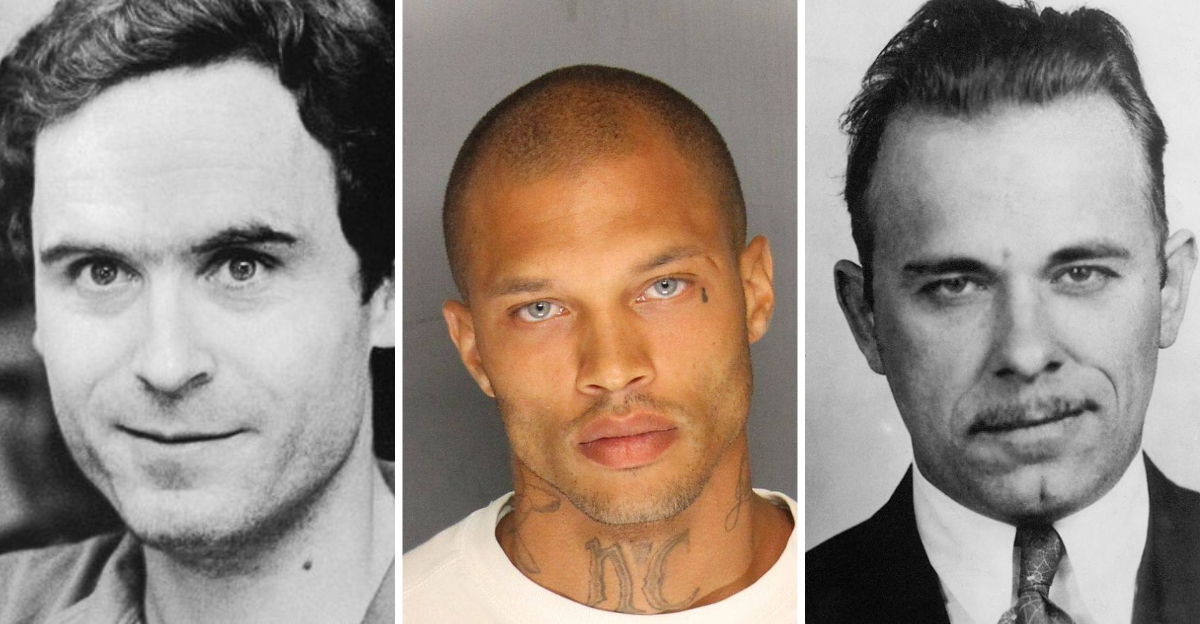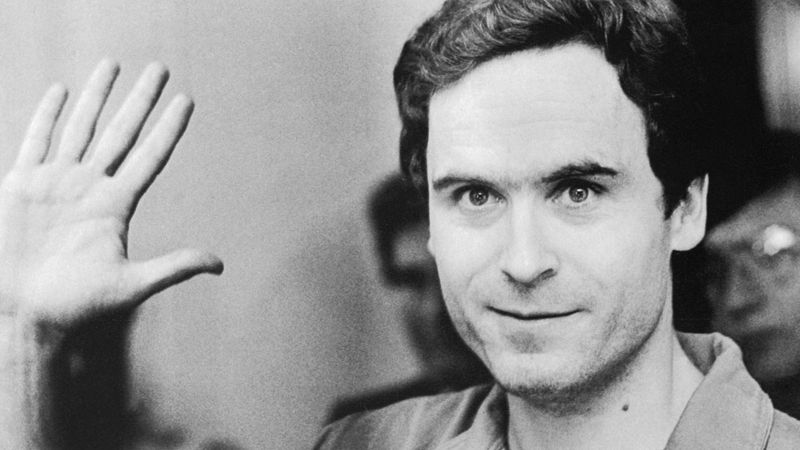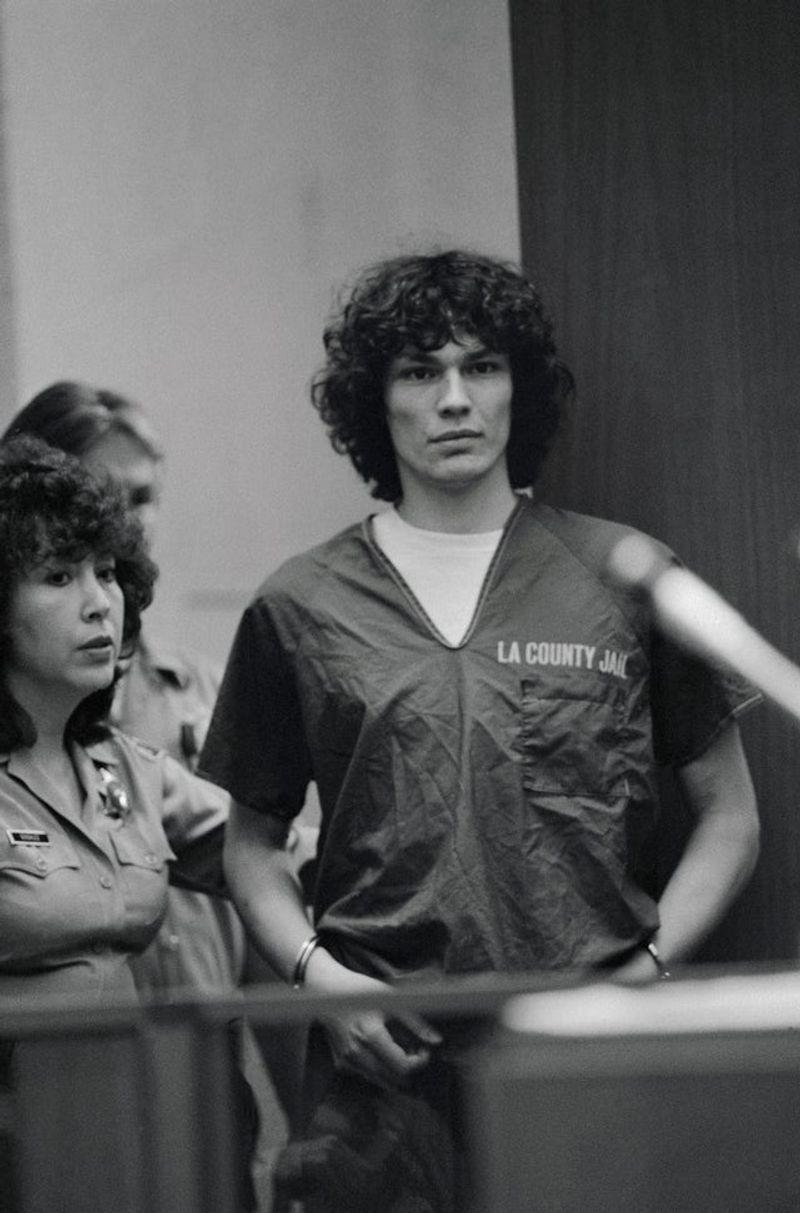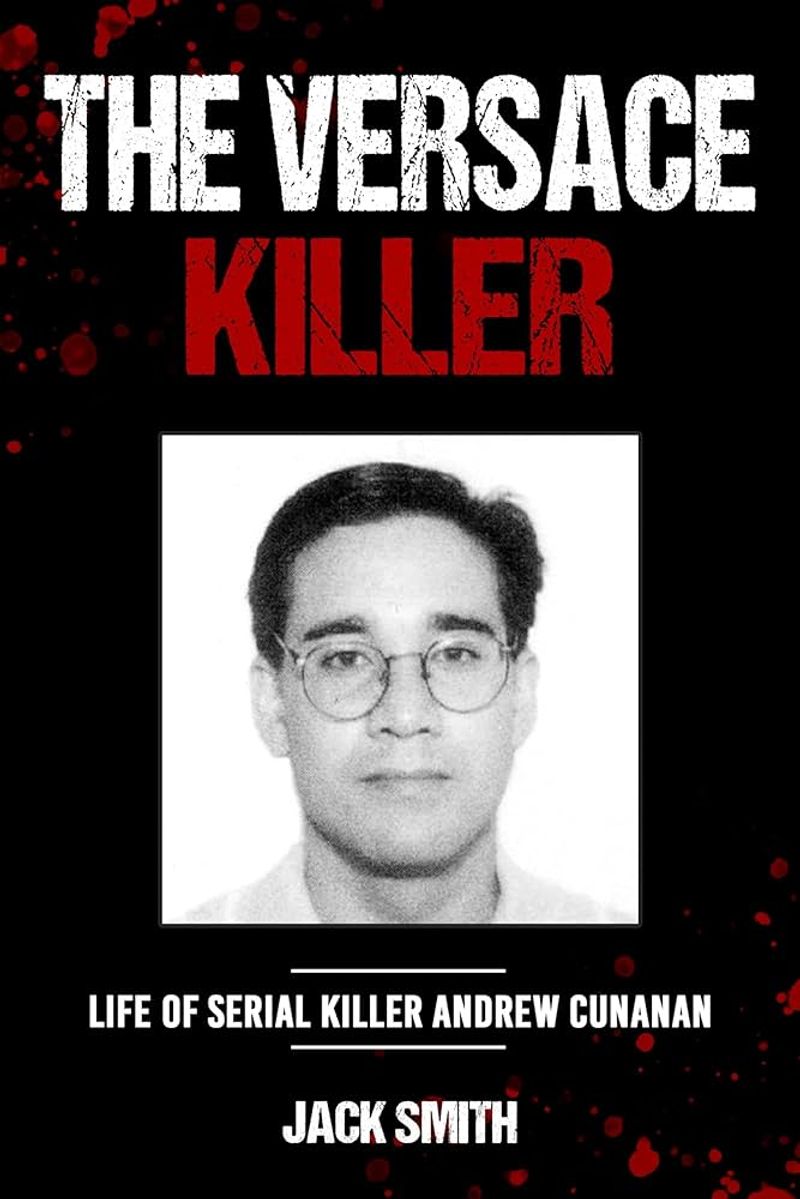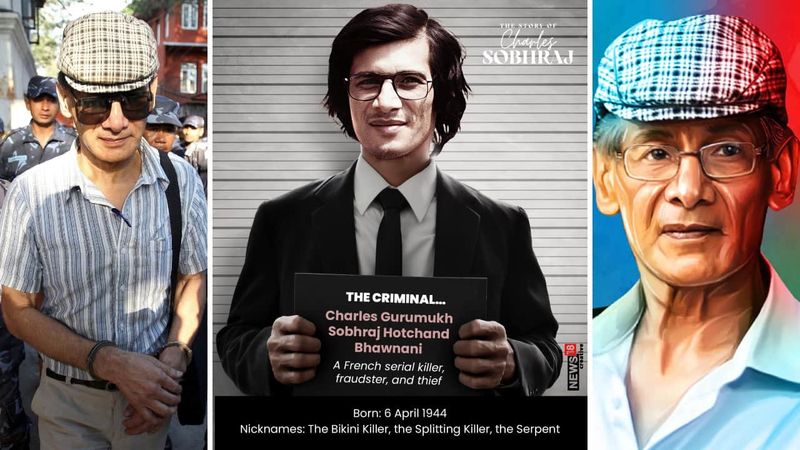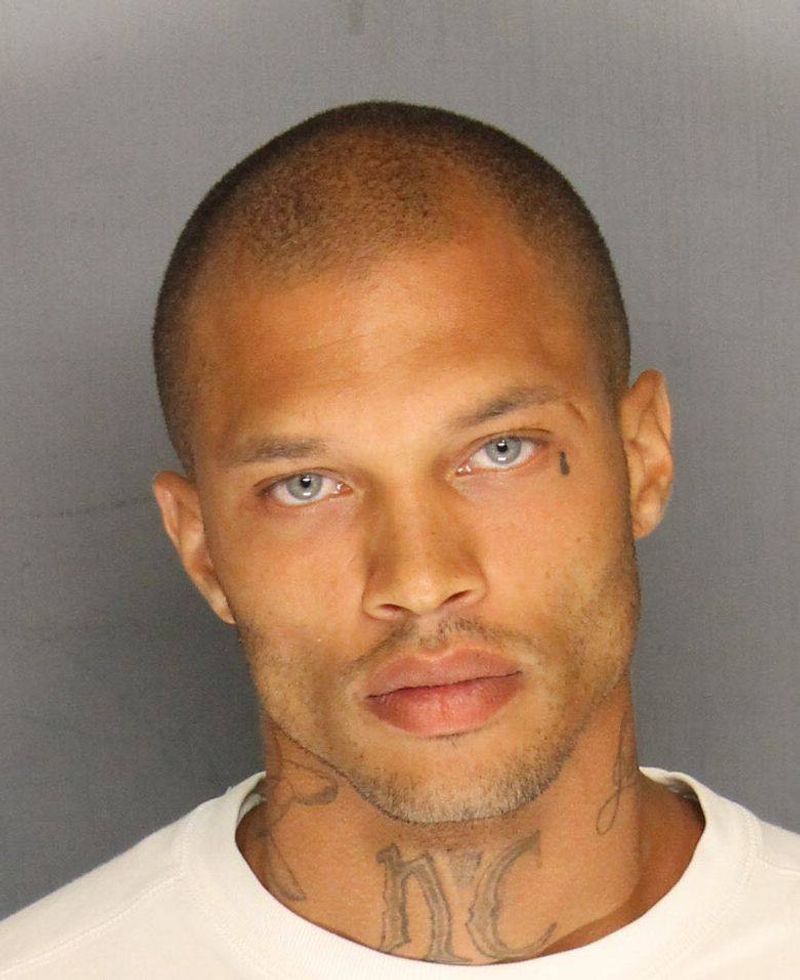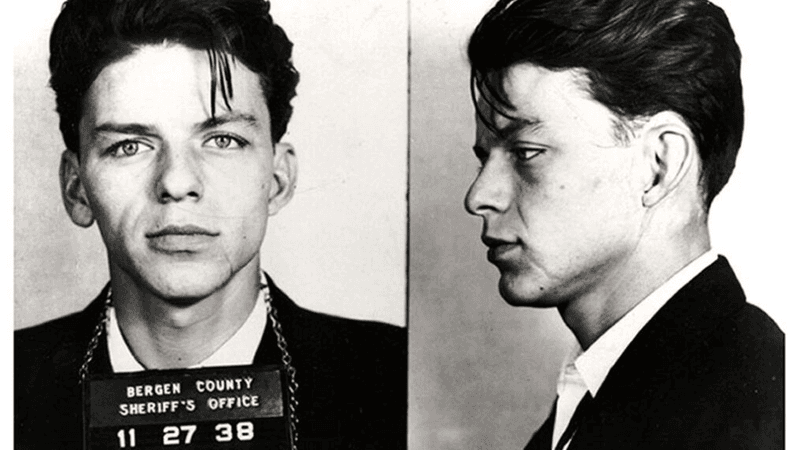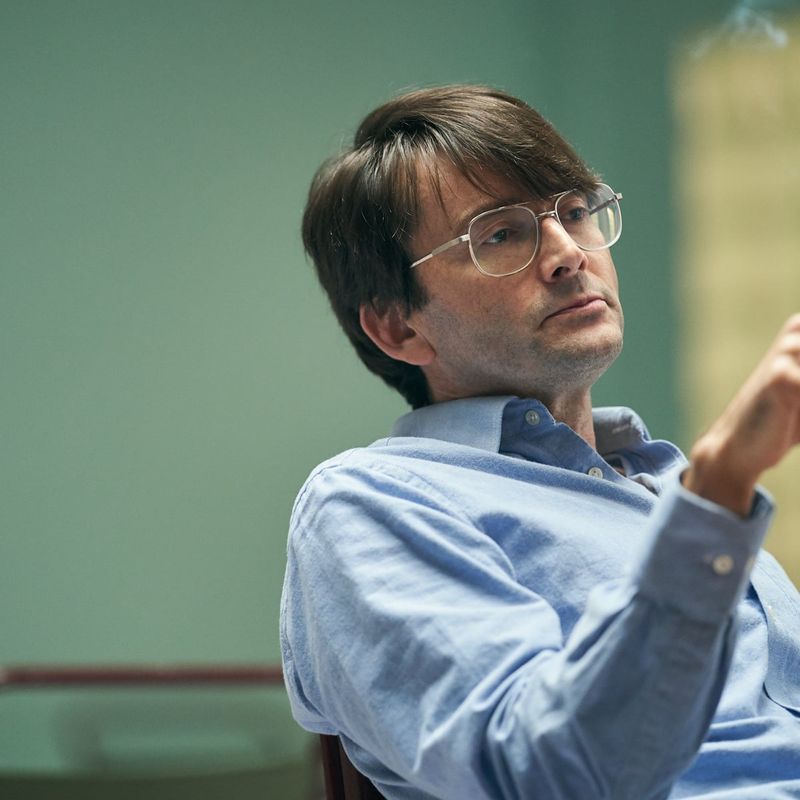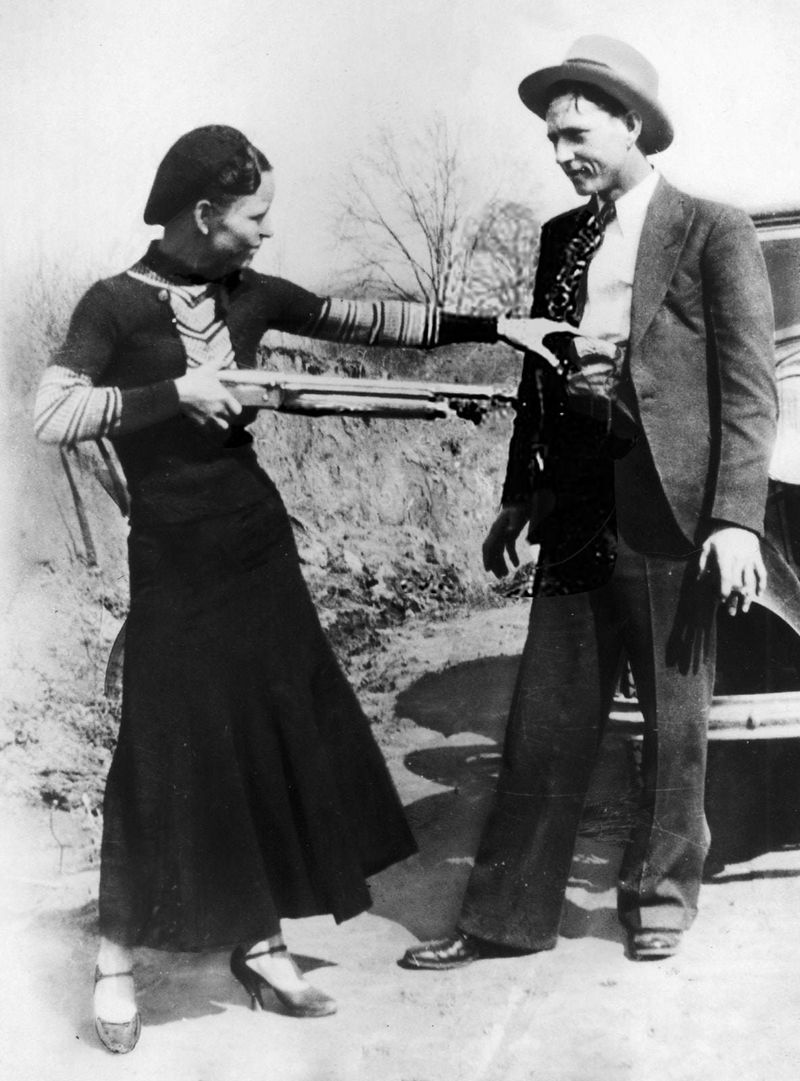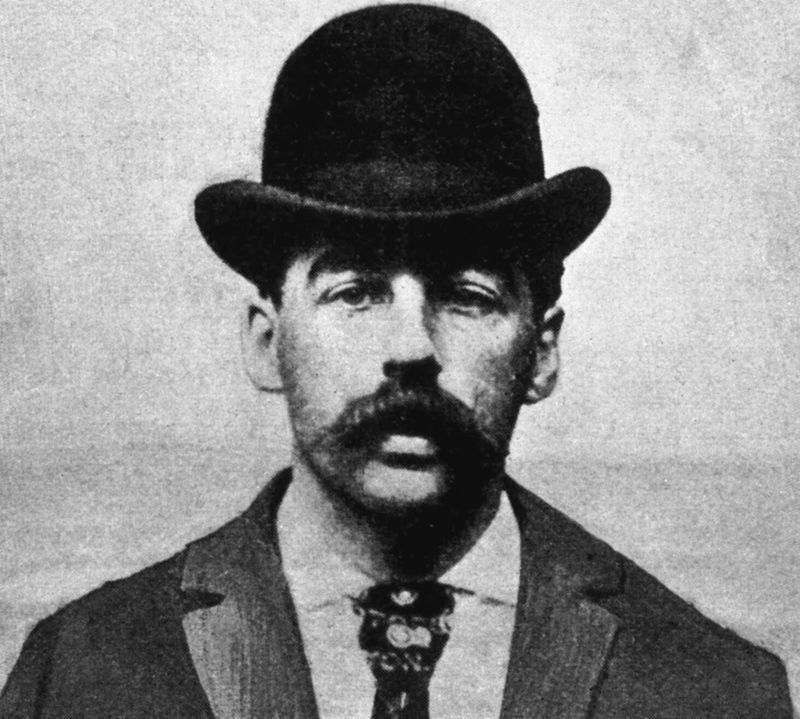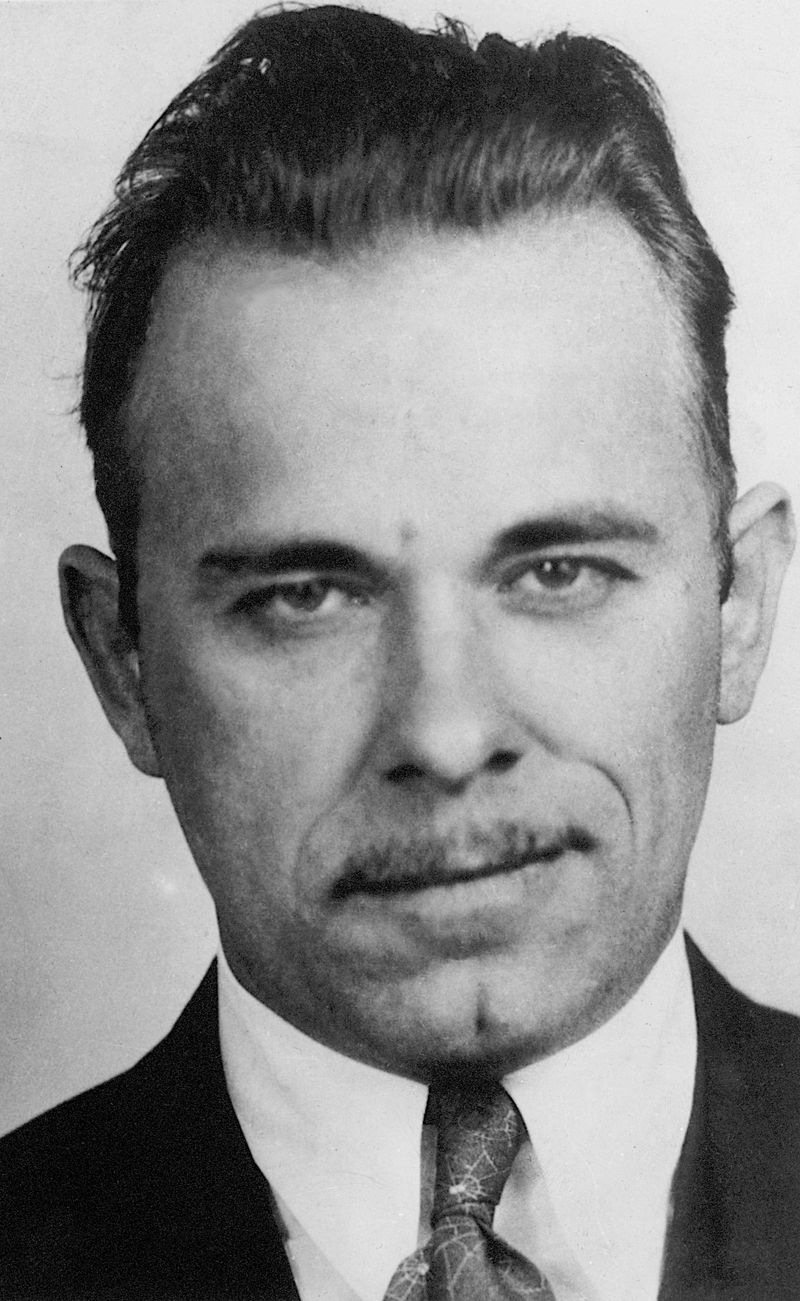Throughout history, some of the most dangerous criminals possessed not just cunning minds, but striking good looks that helped them deceive their victims. Their attractive appearances often earned them sympathy, media attention, and even devoted followers despite their horrific actions. These handsome villains remind us that evil sometimes wears a charming face, making their crimes all the more disturbing.
1. Ted Bundy: The Charming Law Student
With boyish good looks and an engaging smile, Ted Bundy defied the stereotypical image of a serial killer. His polished demeanor and intelligence helped him gain trust from unsuspecting women across multiple states in the 1970s.
What made Bundy particularly dangerous was his ability to appear completely normal—even attractive—to those around him. College-educated and articulate, he sometimes pretended to be injured to lure compassionate women to their deaths.
Even during his murder trials, Bundy attracted female admirers who sent love letters and marriage proposals. One woman, Carole Ann Boone, actually married him while he testified in court, demonstrating the bizarre power his charisma held over some women.
2. Richard Ramirez: The Night Stalker’s Dark Allure
Tall with chiseled features and penetrating eyes, Richard Ramirez terrorized California in the mid-1980s. Despite his horrific crimes—home invasions, murders, and assaults—his brooding appearance attracted a cult following.
Ramirez embraced a rock star persona during his trial, sporting all-black attire and sunglasses. His satanic beliefs and rebellious demeanor only enhanced his dark appeal to certain admirers, who saw him as dangerously exciting rather than simply dangerous.
Perhaps most disturbing was the fan mail and marriage proposals he received while incarcerated. Several women would visit him regularly in prison, showing how his sinister charisma continued working even after his capture and conviction.
3. Andrew Cunanan: The Socialite Spree Killer
Blessed with boyish charm and a gift for conversation, Andrew Cunanan navigated elite social circles with remarkable ease. His well-groomed appearance and ability to speak multiple languages helped him blend into high society before his deadly rampage in 1997.
Friends described him as intelligent and witty, with an encyclopedic knowledge of fine art and culture. This sophisticated facade allowed him access to wealthy circles where he could charm potential victims, including fashion designer Gianni Versace.
Cunanan’s ability to reinvent himself—changing his appearance and backstory to suit different social situations—made him particularly dangerous. His handsome face became his most effective disguise, allowing him to approach victims who never suspected the darkness behind his winning smile.
4. Charles Sobhraj: The Serpent’s Hypnotic Gaze
Nicknamed “The Serpent” for his slippery ability to evade capture, Charles Sobhraj possessed a magnetic presence that drew travelers into his deadly orbit. Half-Vietnamese and half-Indian, his exotic features and cosmopolitan air made him irresistible to many Western tourists exploring Asia’s hippie trail in the 1970s.
Multilingual and worldly, Sobhraj presented himself as a gem dealer or drug dealer to gain victims’ trust. His girlfriend Marie-Andrée Leclerc fell so deeply under his spell that she helped him commit murders, showing the extraordinary power of his charm.
Even in his seventies, Sobhraj maintained the self-assured smile and piercing gaze that once helped him manipulate dozens of victims. His story inspired books, films, and a Netflix series—proof of the public’s enduring fascination with his deadly charisma.
5. Jeremy Meeks: From Mugshot to Modeling Contract
When police posted Jeremy Meeks’ mugshot on Facebook in 2014, they never expected to launch a modeling career. His piercing blue eyes, sculpted cheekbones, and full lips earned him the nickname “hot felon” as his image went viral worldwide.
Arrested for grand theft and possession of a firearm, Meeks’ criminal history included connections to the Crips gang and previous assault charges. Yet his striking looks overshadowed his criminal record in the public imagination, sparking debates about society’s tendency to forgive attractive people.
Upon his release from prison, Meeks signed with a modeling agency and walked runways for major fashion designers. His transformation from convict to fashion icon represents perhaps the most dramatic example of how physical attractiveness can sometimes outweigh criminal behavior in the court of public opinion.
6. Frank Sinatra: Old Blue Eyes’ Brush with the Law
Before becoming an entertainment legend, a 23-year-old Frank Sinatra found himself arrested in 1938 under a bizarre New Jersey law. The charge? “Seduction”—essentially promising to marry a woman to convince her to sleep with him.
His booking photo reveals the same smoldering gaze and confident demeanor that would later make him a heartthrob to millions. With perfectly coiffed hair and a defiant expression, young Sinatra’s mugshot could easily pass for a publicity still from his early career.
The charges were eventually dismissed when authorities discovered the woman in question was already married. This early brush with the law became a footnote in Sinatra’s biography, but his arresting good looks in the mugshot remain a fascinating glimpse of star power in the making.
7. Dennis Nilsen: The Kindly Killer’s Deceptive Appearance
With his neatly combed hair, glasses, and unassuming demeanor, Dennis Nilsen looked more like a mild-mannered civil servant than a serial killer. His ordinary appearance was perhaps his greatest weapon in luring at least 12 young men to his London flat between 1978 and 1983.
Nilsen’s victims were often homeless or vulnerable young men whom he’d invite home for food, alcohol, and shelter. His seemingly gentle nature and average looks helped him appear trustworthy to those with nowhere else to turn.
Former colleagues expressed shock upon learning of his crimes, having known him as a quiet, efficient worker. This disconnect between Nilsen’s pleasant appearance and his monstrous actions earned him the nickname “The Kindly Killer”—a chilling reminder that evil often wears the most ordinary face.
8. Bonnie Parker & Clyde Barrow: Criminal Love Story
America’s most famous criminal couple captivated the Depression-era public not just with their bank robberies, but with their youthful good looks. Photographs show Clyde’s slicked-back hair and sharp features alongside Bonnie’s fashionable bob and playful smile—images that helped romanticize their violent crime spree.
Unlike many criminals who shunned publicity, Bonnie and Clyde embraced it. They posed for photographs with guns and cars, creating a glamorous outlaw image that contrasted sharply with their brutal reality of killing at least 13 people, including police officers.
Their attractive appearance and love story sparked a public fascination that continues today. When portrayed by Warren Beatty and Faye Dunaway in the 1967 film, their handsome faces became permanently etched in American pop culture, further blurring the line between their criminal acts and their romantic legend.
9. H.H. Holmes: The Handsome Hotel Killer
America’s first recognized serial killer, H.H. Holmes combined Victorian-era good looks with a doctor’s respectable status. His neatly trimmed mustache, penetrating gaze, and formal attire helped him appear as a successful businessman rather than a calculating murderer.
Holmes constructed a labyrinthine “Murder Castle” in Chicago during the 1893 World’s Fair, complete with hidden rooms, gas lines, and chutes to the basement. His refined appearance and articulate manner allowed him to charm numerous victims—mostly young women—into his deadly hotel.
Contemporary accounts described Holmes as handsome and charismatic, with one newspaper calling him “exceedingly good-looking.” This combination of attractiveness, intelligence, and social standing made him particularly dangerous, as victims readily trusted a man who seemed every inch the successful gentleman.
10. John Dillinger: The Gentleman Gangster
With his slick suits, confident smile, and movie-star good looks, John Dillinger became the face of Depression-era bank robbery. Standing 5’7″ with an athletic build, Dillinger cut a dashing figure that helped make him a folk hero despite his violent crimes.
Unlike many gangsters of his era, Dillinger maintained a code of not killing civilians during his heists. This selective morality, combined with his handsome appearance and charisma, earned him public sympathy at a time when many Americans resented banks for foreclosing on homes during the Depression.
When authorities finally cornered him outside Chicago’s Biograph Theater in 1934, Dillinger was attending a gangster film with a date—a fitting end for a criminal whose life often seemed straight out of a Hollywood movie. His death mask became a popular attraction, preserving his handsome features for posterity.
